The Importance of Proper Insulation for Summer Energy Efficiency
Proper insulation plays a crucial role in keeping our homes comfortable during the summer months. Not only does it help maintain a pleasant indoor temperature, but it also contributes to energy efficiency and cost savings.
Did you know that 9 out of 10 homes in the U.S. are under-insulated
As the summer heats up, it’s helpful to understand proper insulation for summer energy efficiency and its various benefits. Let’s dive in.
The Basics of Insulation
Insulation acts as a barrier that slows the transfer of heat between the interior and exterior of a home. First, let’s make sure we understand heat flow, which involves three basic mechanisms: conduction, convection, and radiation.
Conduction is the most common and refers to the transfer of heat energy between objects or substances that are in direct physical contact. For example, when a spoon placed in a hot cup of coffee conducts heat through its handle to your hand.
Convection is the way heat circulates through liquids and gasses. It is why lighter, warmer air rises, and cooler, denser air sinks in your home. This type of heat is why your attic is much hotter than your home’s basement or first floor.
Radiation heat is the transfer of heat energy through electromagnetic waves. It occurs between objects or surfaces with temperature differences and does not require a medium for heat transfer.
Most common insulation materials work by slowing conductive heat flow and convective heat flow. Radiant barriers and reflective insulation systems work by reducing radiant heat gain. The reflective surface must be in contact with an air space to be effective (source).
In short, insulation helps keep the cool air inside during hot summer days, reducing the need for excessive air conditioning and minimizing energy consumption.
Proper Insulation Offers Homeowners Energy Efficiency and Cost Savings
Insulation remains the most important home improvement project a homeowner should make.
According to the U.S. Department of Energy, 49% of a home’s energy bill is spent on heating and cooling. One of the main reasons your energy bills might spike during the summer months (and winter, too, when the heat’s on) is because your home isn’t adequately insulated.
A well-insulated home is a surefire way to help keep your power bill manageable, and an energy-efficient home is better for the environment, too (source).
Let’s review some of the benefits of proper insulation:
Environmental Benefits: Improving energy efficiency through proper insulation benefits homeowners and the environment. Insulation helps lower greenhouse gas emissions as less energy is required from power plants and the need for natural gas, propane, fuel oil, and electricity to heat and cool buildings. Reduced energy consumption means a lower carbon footprint and fewer pollutants, including carbon dioxide, sulfur, and nitrogen oxide. By conserving energy, we contribute to a sustainable future and help mitigate the impacts of climate change.
Saves Money: EPA estimates that homeowners can save an average of 15% on heating and cooling costs (or an average of 11% on total energy costs) by air sealing their homes and adding insulation in attics, floors over crawl spaces, and basements (source).
Insulation can also improve the efficiency of existing HVAC systems because insulation prevents outdoor air from clogging the filters with dust. Clogged filters can cause the appliance to use more energy to function correctly.
Comfort: Proper insulation helps regulate indoor temperatures and enhances overall comfort. Additionally, insulation acts as a sound barrier, reducing noise transmission from the outside and creating a quieter living environment.
Indoor Air Quality: Insulation is good for your health. It helps prevent the infiltration of outdoor pollutants, dust, and allergens, thereby improving indoor air quality. The Harvard School of Public Health estimated that if every family in the United States properly insulated their homes, there would be:
- 110,000 fewer sick days every year
- 240 less premature deaths every year
- 6,500 fewer asthma attacks every year
Insulation increases the value of your home: Added insulation on property value will vary based on the home’s size and the type of insulation installed, but some reports indicate that homeowners will enjoy a 2 to 6 percent increase in their overall property value. Adding insulation will help your home “go green.” Insulation and other energy-efficient features could be a deal breaker—or a deal maker—when selling your home.
Types of Insulation
Various types of insulation are available, each with its advantages and suitable applications. The most common options include fiberglass batts, cellulose insulation, spray foam insulation, and rigid foam boards. Your insulation choice will depend on factors such as the climate, building structure, and budget. Consulting with a professional can help determine the most appropriate insulation for your home.
Learn More about the Different Types of Insulation Here
Do I Need New Insulation, and Where Should I Insulate?
Over time, insulation may become less effective due to wear and tear or inadequate installation. Re-insulation can revitalize your home’s energy efficiency and maximize comfort. By upgrading or adding insulation in key areas, you can significantly improve the overall performance of your home.
Start by evaluating your existing insulation (its type and thickness) and compare its R-value to the U.S. Department of Energy’s recommendations for your location to see if you should update your insulation.
Next, you will want to conduct an energy audit of your home. Check for drafts, and see if the temperature changes drastically from room to room or the power bill is exceptionally high. An audit will give you the best idea of where to focus your insulation upgrades. A qualified home energy auditor can also conduct a whole-home energy assessment.
Then make a list of the areas that need to be insulated:
- Garage Door
- Attic
- Exterior Walls
- Basement / Crawl Spaces
Once you know where and what needs insulation, you should decide whether you will DIY insulation or hire a professional. Now you are ready to start!
Sealing and Insulating Ducts
Remember to seal and insulate ducts. Sealing air leaks around your home and adding insulation are two of the most cost-effective ways to improve energy efficiency and comfort in your home.
In addition to insulating walls and roofs, sealing and insulating ducts is essential to optimize energy efficiency. Leaky ducts can result in significant energy loss as cooled air escapes before reaching the desired areas. Properly sealing and insulating ducts can prevent energy wastage and ensure that the cooled air reaches its intended destination efficiently.
Most homes in the United States don’t have enough insulation and have significant air leaks. By tackling both projects, you can maximize your comfort and save up to 10% on your annual energy bills (source).
More Energy-Efficiency Tips for Summer
While insulation is crucial for summer energy efficiency, adopting other energy-saving practices can further enhance your efforts. These simple measures can help lower your summer energy bill.
- Replace old light bulbs with LED bulbs
- Change the A/C Filter
- Use ceiling fans
- Lower the temperature of the water heater
- Close your blinds during the hottest parts of the day
Check Out These Energy-Efficient Summer Saving Ideas
Proper insulation is essential for achieving summer energy efficiency and enjoying a comfortable living environment. By reducing heat gain and loss, insulation helps minimize energy consumption, lower utility bills, and protect the environment. It provides multiple benefits, including improved indoor air quality, reduced noise transmission, and enhanced comfort. So, don’t overlook the importance of insulation—investing in it today will bring long-lasting rewards for your home and wallet.
Take Control of Your Energy Usage
Stay cool and energy-efficient this summer!
Resources
What our customers are saying
See why our power customers say we're the best electricity provider in Texas!
I was worried about getting electricity for my home through a prepaid company. I was calling around to see different rates then going through all the hassle of credit checks while dropping points each…
I have been with this company for several years and have been very happy since. Even when I moved, they made my usually stressful situation very easy and carefree. I recommend them to everyone that I…
I have enjoyed the service for 2 years now. In the beginning this service was planned to be temporary but with the service being so effective for me i decided to keep it for the long haul. I’m a happy customer.









